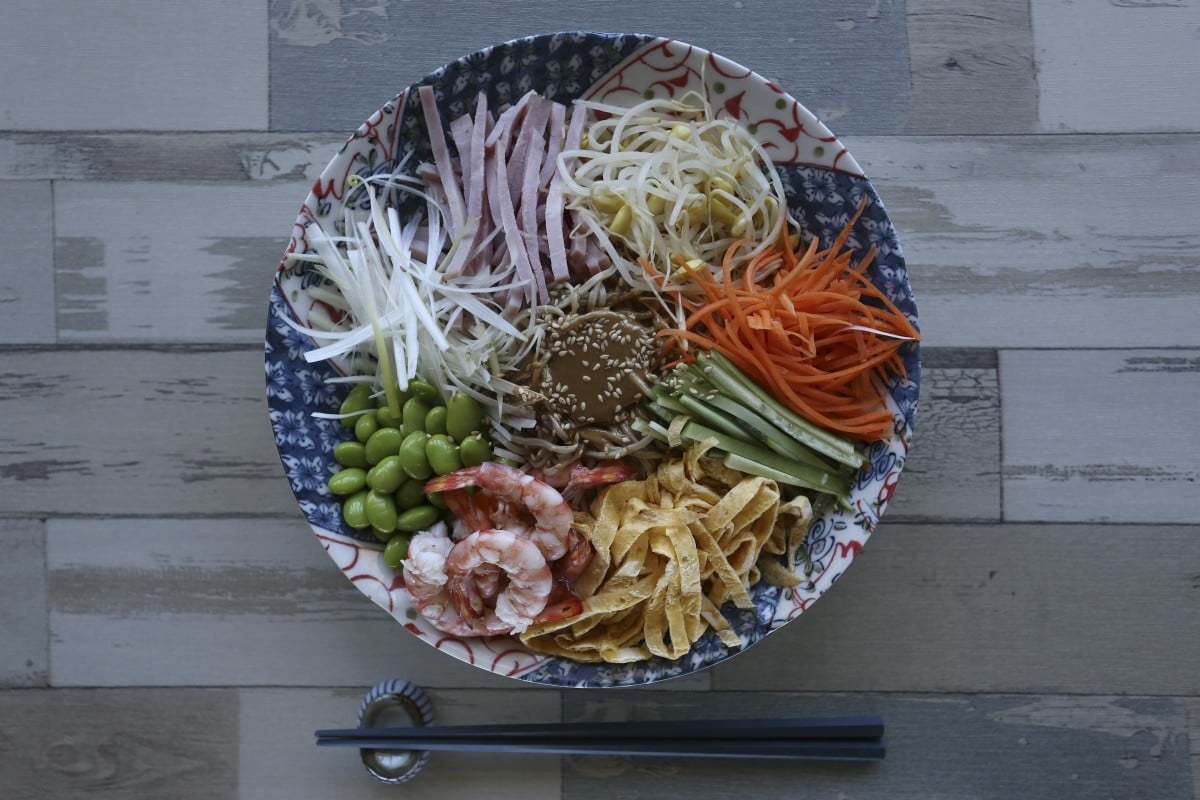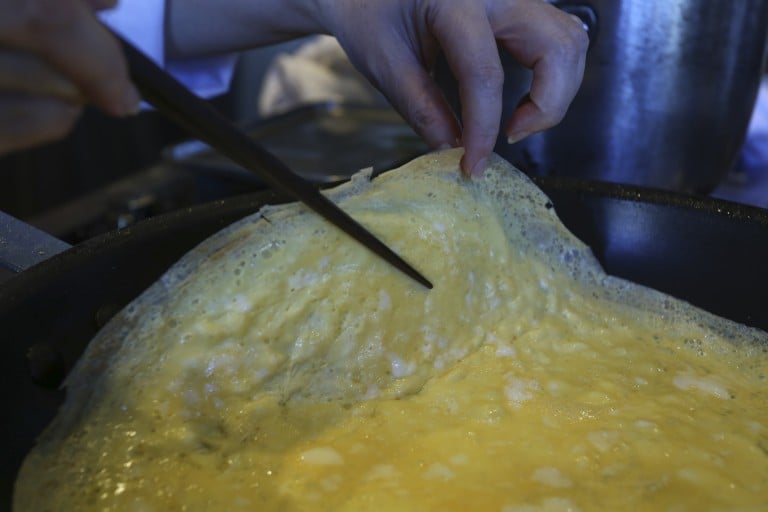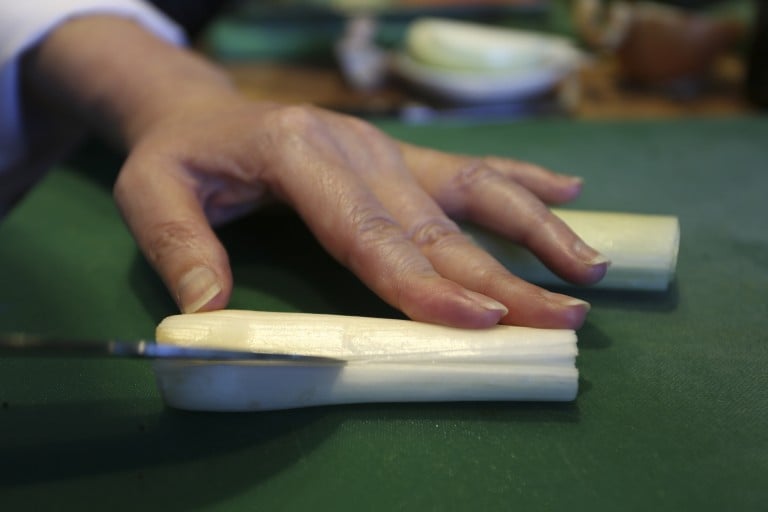
The Japanese consider hiyashi chuka to be summer food, and in the spirit of seasonal eating, the dish is not served at other times of the year. But in tropical and sub-tropical climates, cold noodles are refreshing whenever it's hot outside - and that's far longer than just the summer months.
Usually, the cold ramen comes with a watery, refreshing, vinegar-based sauce that you pour over the noodles, but I prefer a thicker, miso-based sauce.
Although ramen is usually considered a Japanese dish, its origins actually lie in China, and hiyashi chuka translates as “cold Chinese noodles”. You can vary the toppings as you like, adding (or substituting) shredded daikon, ripe tomatoes, matchsticks of mild, sweet peppers, fresh corn kernels or batons of Japanese fishcake. Many versions use crab stick, but I prefer fresh shrimp. The ham shouldn’t be cut too thin – choose slices that are about 3mm (⅛ in) thick.
Edamame, or fresh soybeans, are sold in the pods. You can sometimes find them ready cooked in the frozen section of supermarkets, in which case, buy them, because they are delicious: sweet, tender and perfectly salted. Just let them thaw before using them, or, if you don’t have time for that, blanch the frozen soybeans in boiling water, then drain them before removing the pods.
If using fresh edamame, briefly rinse them, then use kitchen shears to snip off the tip of the stem end so a little of the pod’s interior is revealed (this helps the salted water penetrate the bean, to flavour it).
Bring a large pot of well-salted water to the boil, add the edamame and boil until tender, about eight minutes (test one by opening the pod and tasting the bean). Drain the soybeans, rinse with cold water, then drain again and leave to cool.
Remove and discard the edamame pods, and set aside the soybeans.
Remove the heads and shells from the shrimp (reserve them to make shrimp stock or oil for use in another dish). Lay each shrimp on its side and cut it in half, slicing parallel to the chopping board. Remove and discard the vein from the back of the shrimp.
Bring a fresh pot of lightly salted water to the boil, add the bean sprouts, stir once, then use a shallow mesh ladle to scoop them out of the pot. Put the bean sprouts in a colander, rinse with cold water, then drain.
Bring the same pot of water to the boil, add the shrimp and simmer for about 20 seconds, or until they are cooked. Scoop them from the water and drain.
Bring the same pot of water back to the boil, add the noodles and cook until they are a little on the firm side – do not overcook them. Drain them, rinse with cold water and drain again.

Whisk the eggs with a little salt. Lightly oil a 20–25cm (8-10 in) skillet and place it over a medium flame. When the pan is hot, add about a third of the egg, or enough to lightly coat the skillet in a thin layer. Cook the egg crepe until set – the surface will change from shiny to matt. Slide the egg crepe onto a plate (no need to cook the other side), then cook the remaining egg the same way. Stack the egg crepes as they are done.
Lightly roll the egg crepes into a cylinder, then slice into thin strips about 5mm (¼ in) wide. Unroll the strips and set aside.

Slice the ham into thin strips about 4cm (1½ in) long. Finely julienne the leek, cucumber and carrot into pieces that are about 4cm (1½ in) long.
In a small bowl, stir together the miso, sesame paste, sugar and vinegar. Add a little chilli oil, if you like, then taste the sauce; if necessary, mix in some salt and more vinegar or sugar. Stir in a little warm water to thin the mixture to a smooth consistency that will lightly coat a spoon.
Rinse the ramen noodles with cold water and loosen them with your hands. Divide the noodles between four shallow individual serving bowls.
Arrange the shrimp, ham, egg crepe and vegetables separately in attractive piles over the noodles. Spoon some of the sauce over each portion and sprinkle with sesame seeds. Serve the noodles with the extra sauce in a small bowl, for diners to add as they like.